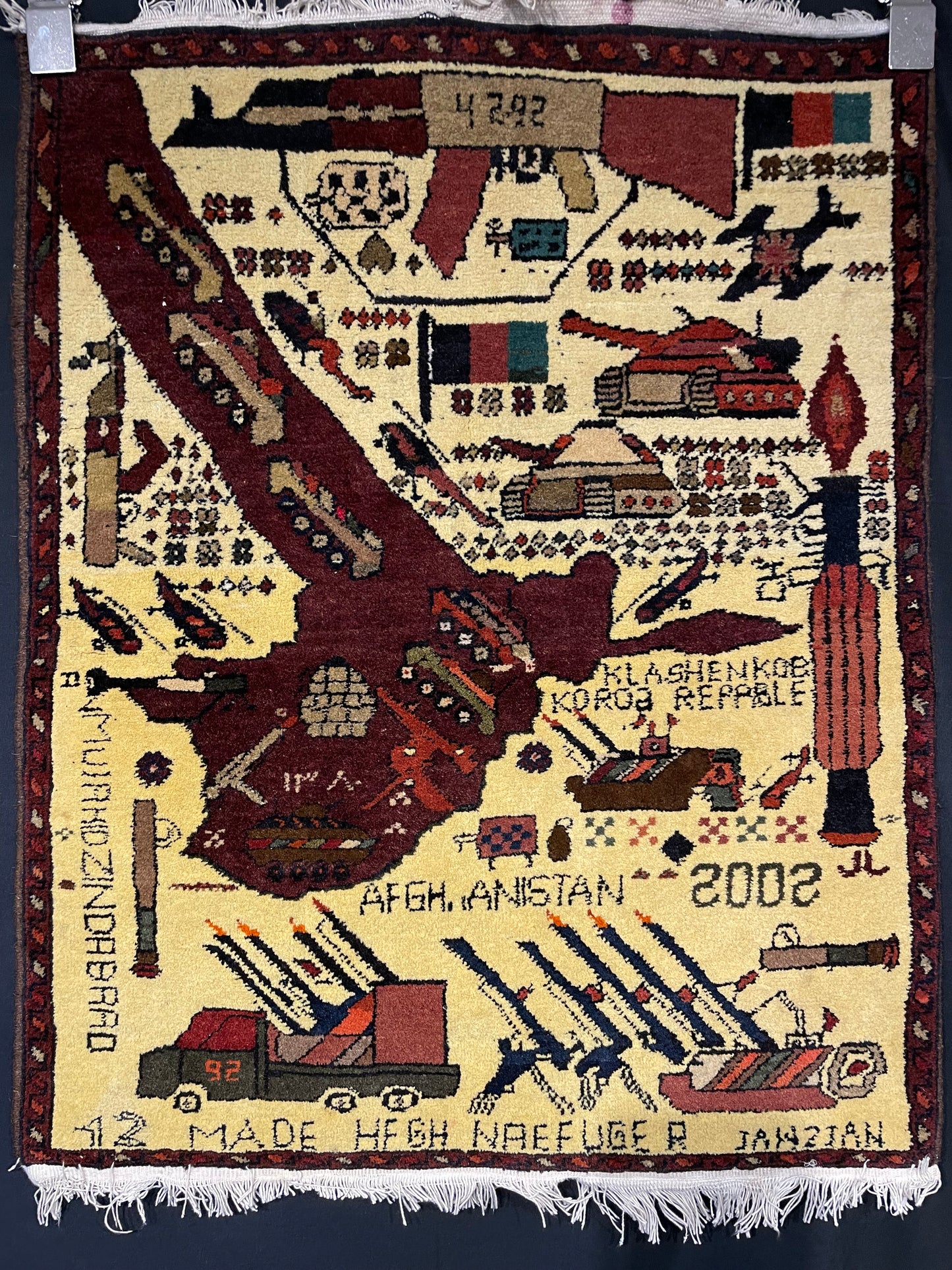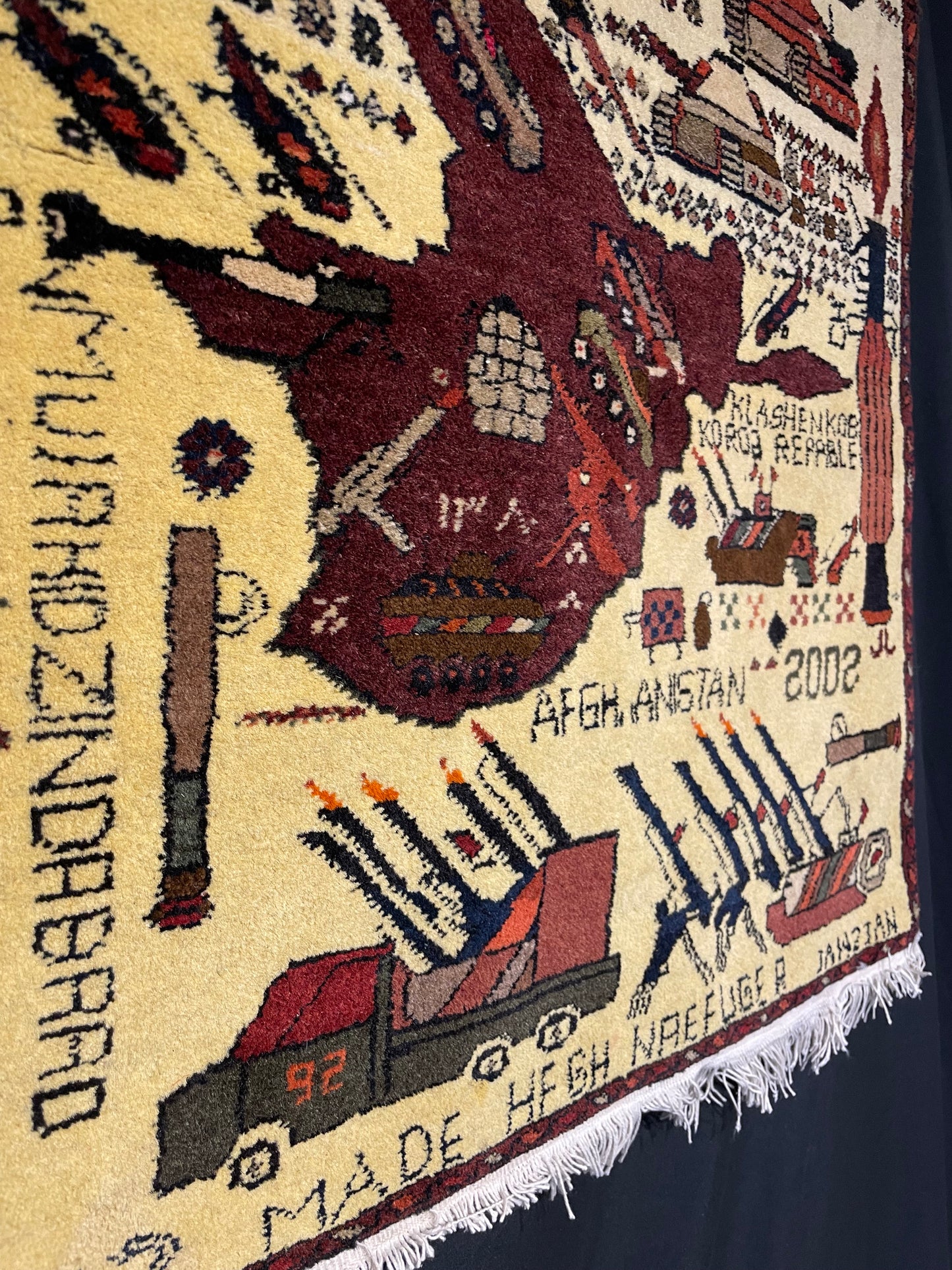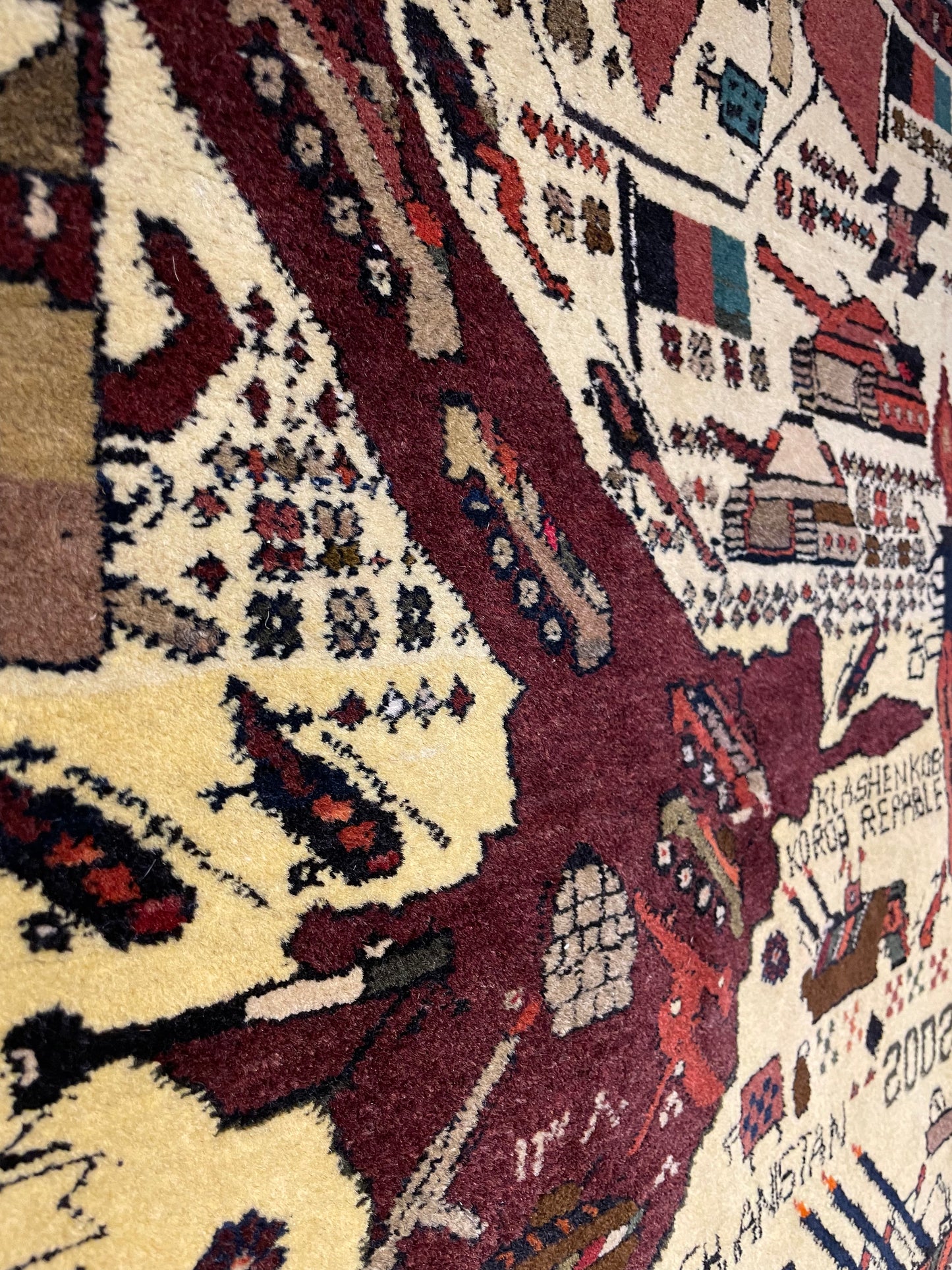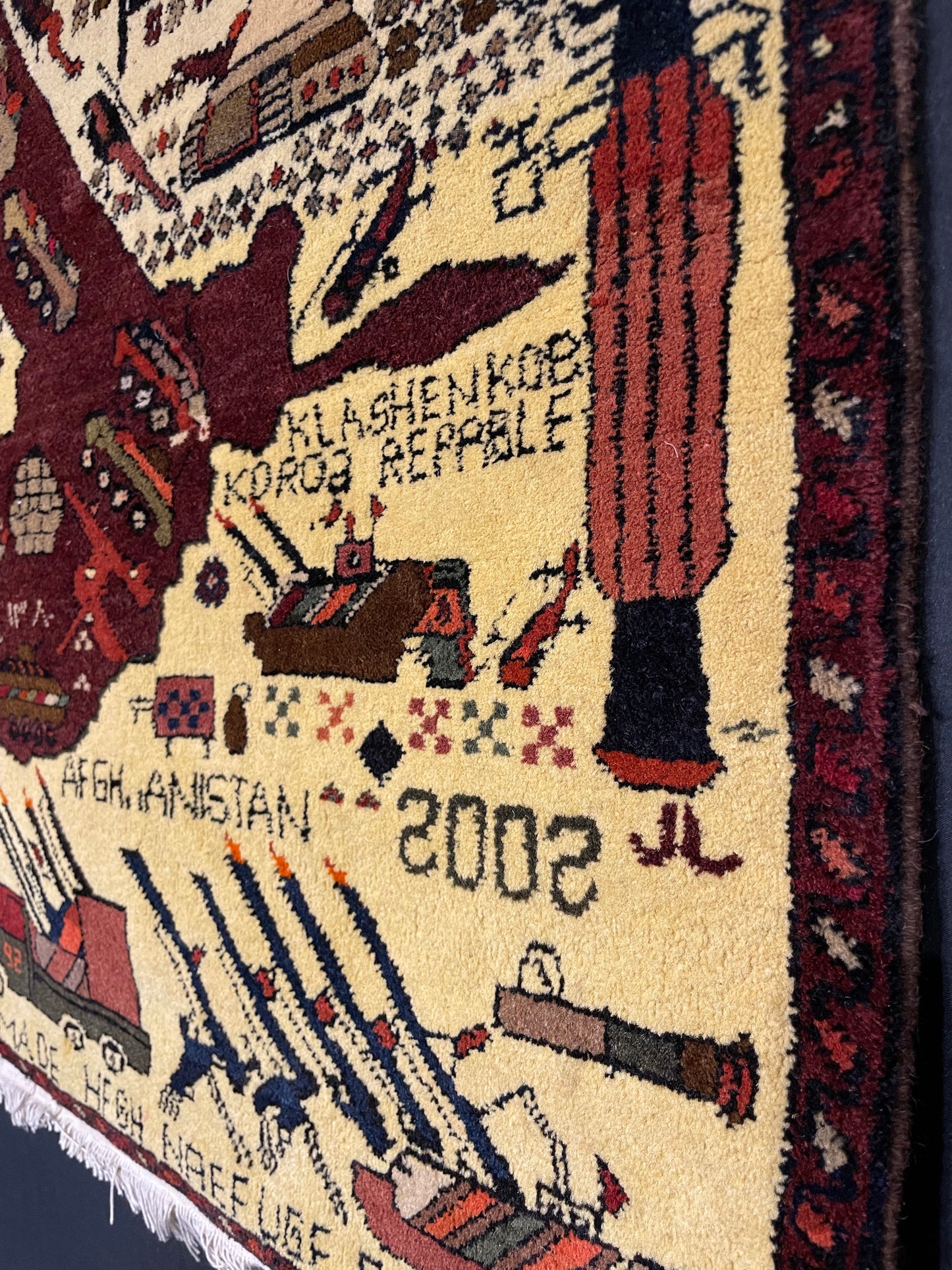Afghan War Rug
Afghan War Rug
Couldn't load pickup availability
This Rug captures the intensity of conflict through a range of visceral motifs. Russian-made Kalashnikov's, helicopters and tanks are clearly rendered amidst a sea of delicate blossoms and flying bullets. This symbol of life's fragility is accentuated by the sombre shades of burgundy and light brown that permeate the design. But perhaps the most striking imagery of this section is the two afghan flags, that rise amidst this landscape of violence as an enduring symbol of patriotism and defiance against foreign powers.
The lower part of the rug contains several cryptic inscriptions. The reference to '2002' likely alludes to the U.S-led invasion of Afghanistan, whilst the number '12' may indicate the rug's creation in 2012. The phrase next to this appears to be a misspelled version of 'Made in a Refugee Camp.' This was a common occurrence given that approximately 3.6 million Afghans fled the country at the onset of the invasion - many fled to Pakistani cities like Peshawar. The final word, Janzian, is more enigmatic; it may refer to the name of the weaver or possibly the location of the refugee camp where the rug was produced.
The vertical inscription above is a variation of Mujahideen Zindabad, which is Dari for 'Long Live the Mujahideen.' This refers to the resistance fighters who opposed the soviet invasion and later fought in the Civil war of the 1990s.
Overall, these personal touches by the creator gives us a glimpse into his own life - likely displaced in a refugee camp and caught between the lingering aftermath of earlier devastation and the ongoing U.S-Taliban war. This acts as a pertinent reminder that the reality of conflict can so easily be lost in the figures and headlines. It compels us to remember the individual lives and families that have been affected, whose stories persist through creations such as this.
History
History
Afghanistan has experienced a long and complex modern history, marked by both progress and conflict. In the early 20th century, the nation gained independence from British India in 1919, and embarked on a path towards modernisation through a series of western-style reforms. However, decades of internal tension eventually culminated in a military coup in 1973 and a subsequent communist revolution. These events led to the Soviet-Afghan War of 1979-1989, where at least 600,000 civilians were killed. It was during this period when the first War Rugs emerged, as Afghan refugees used their traditional weaving skills to earn a living and to document the world around them.
The 1990s in Afghanistan were defined by continued instability. Rival factions struggled for control, and the ensuing unrest paved the way for the rise of the Taliban - a movement of religious students who sought to enforce strict interpretations of Islamic law. In 2001, the US and its allies launched a military intervention after the Taliban refused to hand over members of al-Qaeda, the group responsible for the 9/11 attacks. The conflict continued for two decades, before formally ending in 2021 with the withdrawal of international forces. Many of the War Rugs produced during this time reflect these more recent events, serving as poignant records of resilience and the profound impact of war.
Details
Details
Size: 80cm x 65cm
Age: 20th century
Condition: Ok
Stock No: SG-AFWR25
Location
Share








